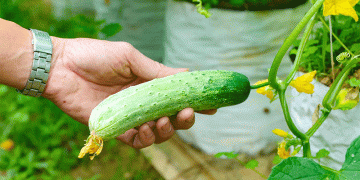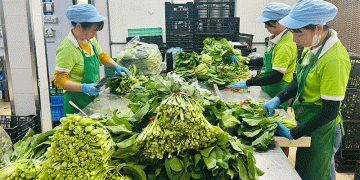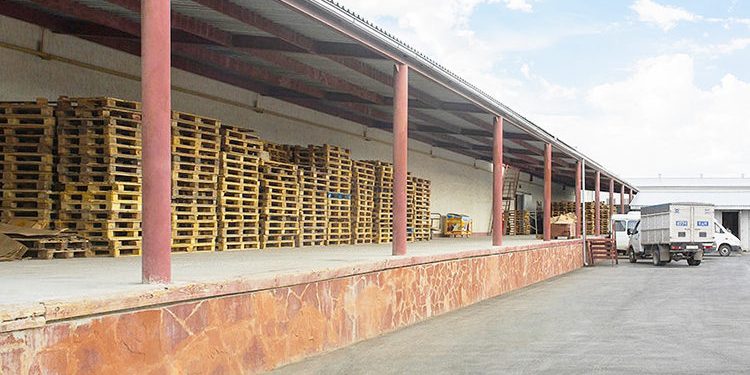This year, 72.7 thousand hectares of vegetables and melons were sown in the region, which is 6.3 thousand hectares more than the previous year. Of these, potatoes are sown on 11.6 thousand hectares, vegetables on 44.1 thousand hectares and gourds on 16.9 thousand hectares, the KazakhZerno.kz correspondent reports.
To date, Zhambyl farmers have harvested potatoes from 3,504 hectares, and 80.6 thousand tons of tubers have been harvested. The yield was 229 centners per hectare. In addition, melons and gourds were harvested from 13.8 thousand hectares, 431.9 thousand tons of watermelons and melons were sent to consumers from the field. The yield was 312 centners per hectare.
Also harvested were 18.9 thousand tons of cabbage, 34.5 thousand tons of carrots, 51.7 thousand tons of onions, 54.3 thousand tons of cucumbers, 64.3 thousand tons of tomatoes, and more than 387 thousand tons of other vegetables. cultures.
The collected products are sent to the markets of the region and other regions. And already now we should think about how to save vegetables and fruits that could not be sold from the field, and those that are intended to provide off-season stocks.
According to the Department of Agriculture of the Akimat of Zhambyl region, there are 236 vegetable stores in the region with a total capacity of 255.9 thousand tons, of which only 81 warehouses are equipped with freezers with a capacity of 47.2 thousand tons. The need for warehouses with a freezer in the off-season period in the region is 57.7 thousand tons.
Meanwhile, there are no vegetable stores in the Moiynkum and Talas regions. There are vegetable stores in Shu and Sarysu districts, but none of them have freezers.
In the meantime, this year the region is forecasted to produce about 2.2 million high-intensity fruits and vegetables. Moreover, the regional agricultural department is confident that the region is able to fully meet the needs of the population in vegetables and fruits.
In the off-season, which lasts four months (from January to April), it is possible to fully store 81.8% of potatoes, carrots, cabbage in 81 warehouses with a freezer in the amount of 57.7 thousand tons.
How many warehouses does a region need to store harvested fruits and vegetables?
Warehouses equipped with freezers with a capacity of 21.4 thousand tons are needed to store the entire volume of manufactured products in accordance with the consumption rate for the population of each region.
Products are placed in warehouses for periodic storage in September-December.
In addition, a special Roadmap and the Development Plan for the agro-industrial complex of the Zhambyl region are being implemented in the region. As part of these documents, in 2022-2025, it is planned to build 39 vegetable stores with a capacity of 100.3 thousand tons. 16 of them have freezers with a total capacity of 59.4 thousand tons.
This year, within the framework of the Roadmap and the Plan for the Development of the Agroindustrial Complex of the region, eight warehouses with a capacity of 27.6 tons are being built, of which six will be equipped with freezers for 6,700 tons of products. The total cost of all projects is 4 billion tenge.
In particular, the Gulder farm in the Merken district is completing the construction of a 1,200-ton warehouse and is already installing equipment. The individual entrepreneur “Matyshev” in the Shu district is building a warehouse for 20,000 tons, the individual entrepreneur “Kalpakov” is implementing two projects in the Kordai district for 800 tons, Asia Sad LLP is building a warehouse for 5,600 tons.
As part of the development plan, Grand Foods Premium LLP launched four warehouses with a capacity of 3,000 tons (1,500 tons with a freezer) worth 350 million tenge. In Bayzak district, a warehouse for 1000 tons has already been put into operation, and the construction of the remaining three facilities (Zhambyl district, Kausar farm – 100 tons, Zhualyn district, Zhanatalap farm – 400 tons, Sarysu district, Murat farm) – 1,500 tons) will be completed before the end of the year.
After the full implementation of these projects in the off-season, the need in the region for fruits and vegetables will be covered.
































